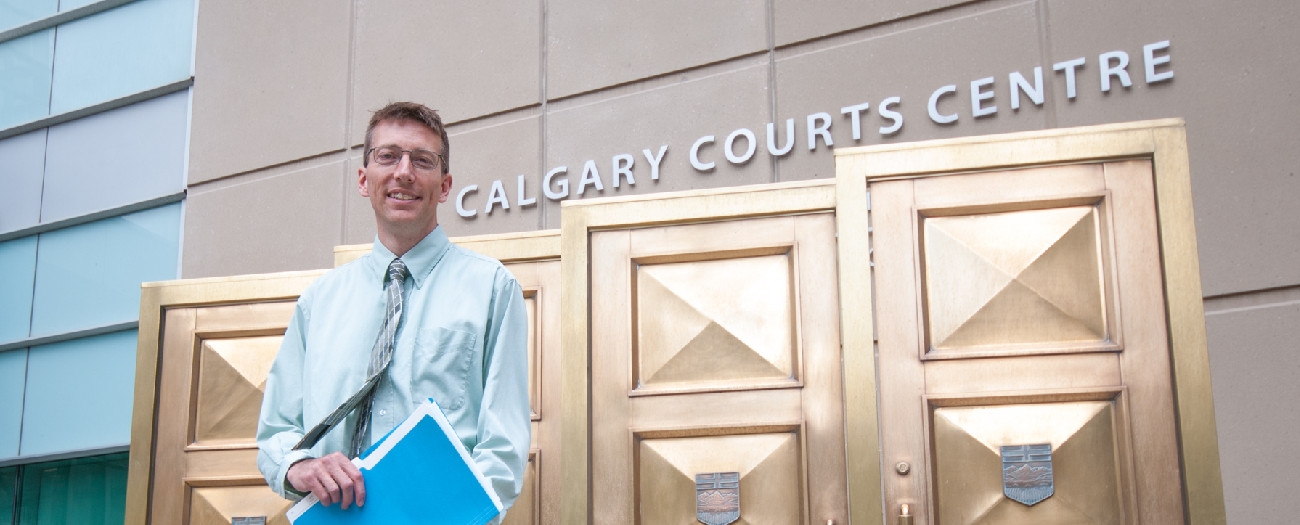AER investigators sift through clues to find what caused incidents.
Calgary, Alberta - October 10, 2018They wear hard hats instead of deerstalker caps and employ 21st-century investigative techniques rather than 19th-century methods. But like Sherlock Holmes, they’re out to solve a mystery.
When an incident such as a pipeline rupture or well blowout occur, a team of Alberta Energy Regulator (AER) investigators is tasked with getting to the bottom of what went wrong and why.
Greg Jones, manager, Major Investigations
We want to tell the full story of what happened and do it in a fair and unbiased way.
Investigators gather evidence to piece together facts. They are peace officers with the authority to apply for search warrants, lay charges, and serve court summonses. And as Greg Jones explains, they’re also storytellers.
“We want to tell the full story of what happened and do it in a fair and unbiased way,” says the AER manager of major investigations. “Did the company do its due diligence? Did it cut corners? What about the company’s policies and procedures? We look at all of these things.”
AER field inspectors inspect wells, pipelines, and other infrastructure to ensure that companies are complying with the rules. Investigators start only after an incident or noncompliance has occurred and trace the steps backwards to reveal all contributing factors that led up to it.
This helps the AER make the best possible enforcement decision.
Just the Facts
The first part of an investigation involves gathering all of the information. Investigators visit the incident site to gather any initial evidence at the scene. They interview key people and gather historical and background information and, along with other teams from the AER, examine the root causes, determine whether any regulations have been broken, and identify the parties responsible. They also note ways to improve industry practices to prevent the incident from happening again.
Through this work, investigators are trying to answer a number of important questions:
- Did the incident have a significant impact on public safety, the resource, or the environment?
- Was the incident or noncompliance preventable?
- If it was preventable, did the company take all reasonable steps, otherwise known as due diligence, to prevent the incident from occurring?
- Who is ultimately responsible for the noncompliance?
- Did the company gain an economic benefit from the noncompliance?
- Is the noncompliance an isolated case, or is it widespread across the company’s operations?
Once the investigation is complete, the investigator writes an investigation report that is provided to a statutory decision maker, who is a senior AER employee with the delegated authority to make decisions around enforcement actions.
This report is posted to the Compliance Dashboard; the dashboard lists any compliance and enforcement actions, from warning letters to administrative penalties to laying criminal charges.
If charges are laid, the investigation moves to a courtroom. The Crown prosecutor and defence counsel review the AER’s investigation file and present their cases to the court. At the end of the proceeding, it’s the court’s responsibility—not the AER’s—to decide whether the company is guilty and what penalty it might receive.
Sharing Lessons Learned
Ultimately, Jones and his team hope that their work will help prevent similar incidents from repeating. To help accomplish this, they share the lessons they learn from their investigations, not only with the responsible parties, but with industry as a whole.
“We might find that someone forgot to do a certain test because he was trained but was never properly supervised, or that his work was never checked,” Jones says. “So a big part of our work is to identify these lessons learned and sharing them.”
John Ludwick, Writer



